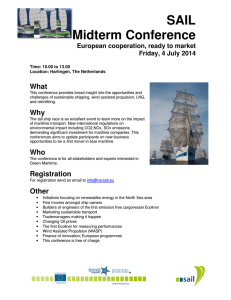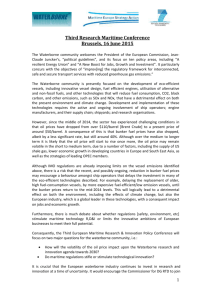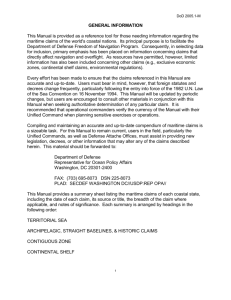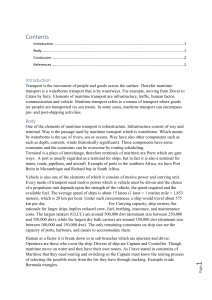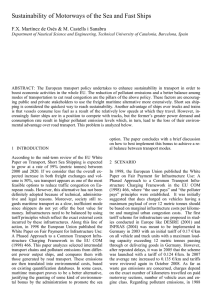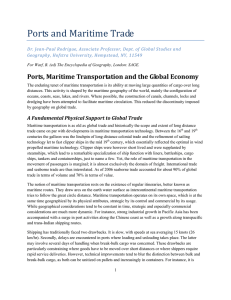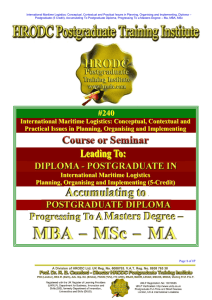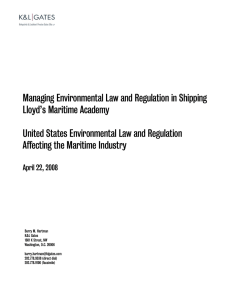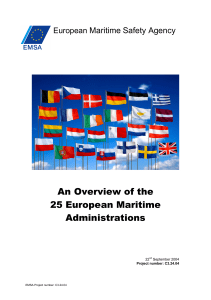CHARTING A COURSE- MARITIME TRANSPORT RESEARCH PRIORITIES
advertisement
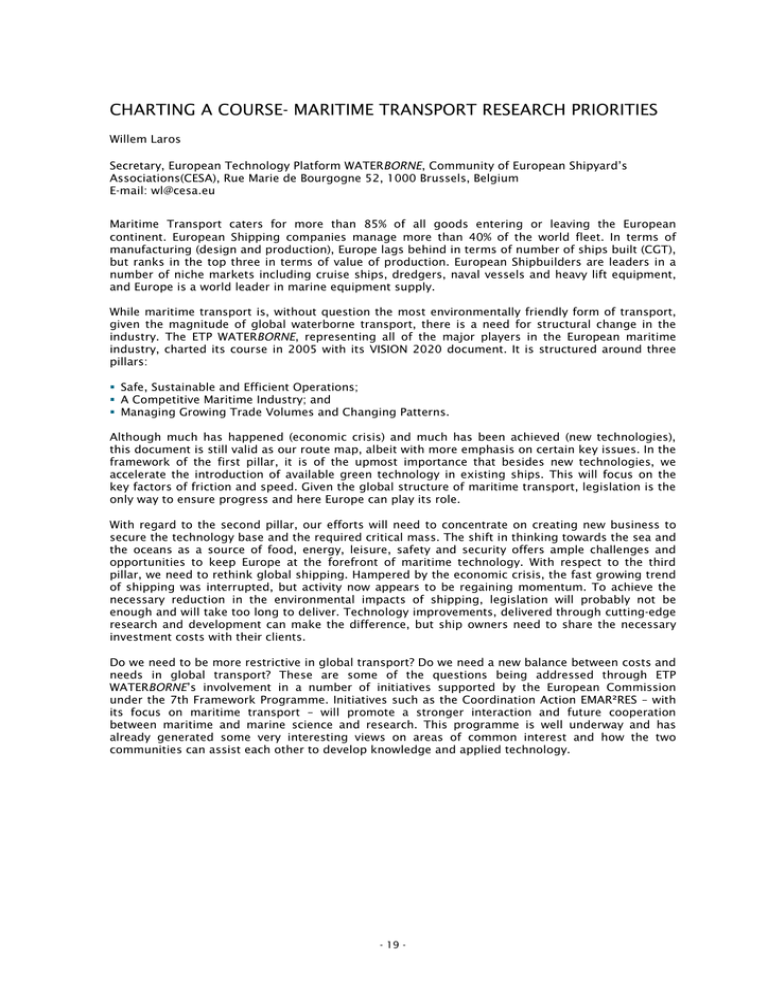
CHARTING A COURSE- MARITIME TRANSPORT RESEARCH PRIORITIES Willem Laros Secretary, European Technology Platform WATERBORNE, Community of European Shipyard’s Associations(CESA), Rue Marie de Bourgogne 52, 1000 Brussels, Belgium E-mail: wl@cesa.eu Maritime Transport caters for more than 85% of all goods entering or leaving the European continent. European Shipping companies manage more than 40% of the world fleet. In terms of manufacturing (design and production), Europe lags behind in terms of number of ships built (CGT), but ranks in the top three in terms of value of production. European Shipbuilders are leaders in a number of niche markets including cruise ships, dredgers, naval vessels and heavy lift equipment, and Europe is a world leader in marine equipment supply. While maritime transport is, without question the most environmentally friendly form of transport, given the magnitude of global waterborne transport, there is a need for structural change in the industry. The ETP WATERBORNE, representing all of the major players in the European maritime industry, charted its course in 2005 with its VISION 2020 document. It is structured around three pillars: Safe, Sustainable and Efficient Operations; A Competitive Maritime Industry; and Managing Growing Trade Volumes and Changing Patterns. Although much has happened (economic crisis) and much has been achieved (new technologies), this document is still valid as our route map, albeit with more emphasis on certain key issues. In the framework of the first pillar, it is of the upmost importance that besides new technologies, we accelerate the introduction of available green technology in existing ships. This will focus on the key factors of friction and speed. Given the global structure of maritime transport, legislation is the only way to ensure progress and here Europe can play its role. With regard to the second pillar, our efforts will need to concentrate on creating new business to secure the technology base and the required critical mass. The shift in thinking towards the sea and the oceans as a source of food, energy, leisure, safety and security offers ample challenges and opportunities to keep Europe at the forefront of maritime technology. With respect to the third pillar, we need to rethink global shipping. Hampered by the economic crisis, the fast growing trend of shipping was interrupted, but activity now appears to be regaining momentum. To achieve the necessary reduction in the environmental impacts of shipping, legislation will probably not be enough and will take too long to deliver. Technology improvements, delivered through cutting-edge research and development can make the difference, but ship owners need to share the necessary investment costs with their clients. Do we need to be more restrictive in global transport? Do we need a new balance between costs and needs in global transport? These are some of the questions being addressed through ETP WATERBORNE’s involvement in a number of initiatives supported by the European Commission under the 7th Framework Programme. Initiatives such as the Coordination Action EMAR²RES – with its focus on maritime transport – will promote a stronger interaction and future cooperation between maritime and marine science and research. This programme is well underway and has already generated some very interesting views on areas of common interest and how the two communities can assist each other to develop knowledge and applied technology. - 19 -
